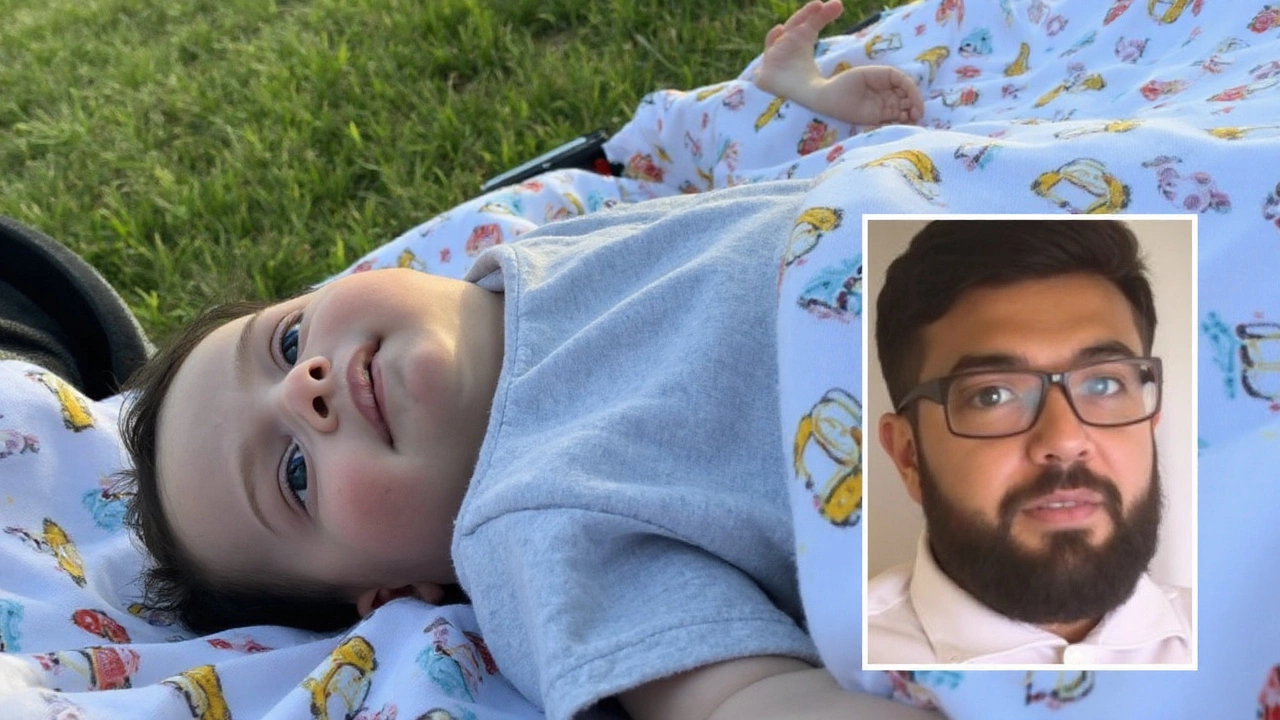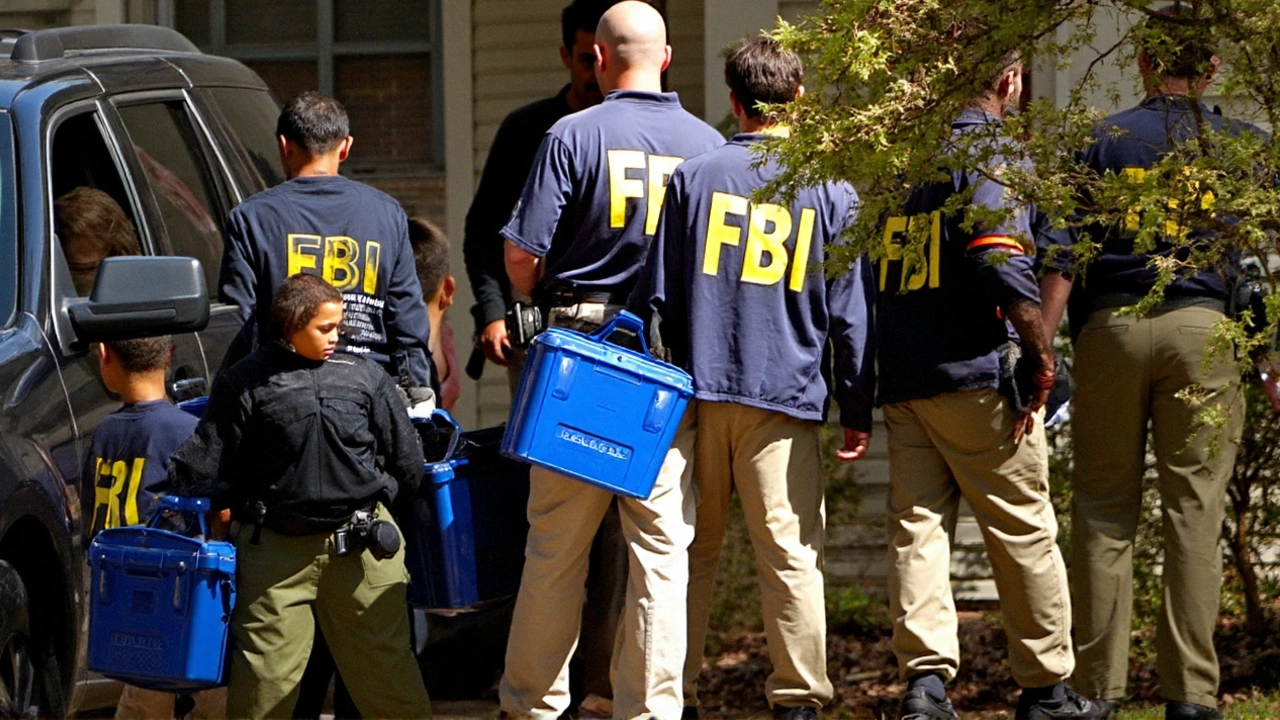The arrest, the alleged cover story, and a month without answers
Armored vehicles rolled up to a quiet street in Cabazon and smashed through a front gate. Moments later, deputies led Rebecca Haro, 41, and Jake Haro, 32, out of their home in handcuffs. The parents of 7-month-old Emmanuel were booked on suspicion of murder after investigators said the kidnapping story they reported was made up to hide a crime. Officials now presume Emmanuel is dead, though his body has not been found.
Relatives and neighbors have said they hadn’t seen the baby for about a month. That gap—weeks without a sighting—became a key part of the timeline detectives pieced together. What began as a frantic alert for a missing child turned into a homicide investigation, according to the San Bernardino County Sheriff’s Department.
The shift came fast. Detectives say the parents’ statements didn’t line up with evidence. Phone data, surveillance pulls, and interviews—standard tools in cases like this—led them to conclude the kidnapping claim was a fabrication. By Friday, a tactical team was at the Haro home on Ramona Street, and the arrests followed.
The case has drawn wide attention. People have driven in from out of state to follow developments. Among them: a YouTube videographer from Virginia, Jimmy Williams, who said people across the country want the same thing local residents want—clear answers about where Emmanuel is and what happened to him.
After his arrest, Jake Haro was seen in an orange jail jumpsuit helping deputies and cadaver dogs search brushy areas near the 60 freeway in Moreno Valley. It’s rugged ground, with freeway shoulders, embankments, and pockets of scrub where searchers have to move slowly. So far, those searches have not found the baby.
Court records show Jake Haro previously pleaded guilty in 2018 to child cruelty in an unrelated case. Detectives have also responded to a child abuse call linked to the Haro family in Moreno Valley, part of a wider pattern of incidents investigators are now reviewing alongside the current case.
On Ramona Street, neighbors set candles, stuffed animals, and notes near the family’s driveway. About 50 people gathered—some crying, some holding signs, many just standing in silence. The vigil has grown into a place where people can leave messages for a child they never met but refuse to forget.
In a case like this, investigators work two tracks at once: search and build. The search track is obvious—dogs, drones, ground teams, and targeted sweeps based on leads. The build track is quieter and just as important: establishing a timeline, pulling digital footprints, checking medical and social services records, and talking again and again to everyone close to the child. If the alleged kidnapping was staged, detectives look for the telltales—missing minutes, routes that don’t match phone pings, surveillance gaps that collide with what people say they were doing.
Finding a body matters. It can make or break a case. Without remains, prosecutors rely more heavily on circumstantial evidence—things like digital data, physical traces, prior conduct, and statements. Those cases can be won, but they are harder. That’s why you see the intense focus now on targeted search zones along the 60 and in surrounding pockets of Moreno Valley.
Authorities have not publicly detailed what led them to those specific spots, but in similar investigations, phone location records, vehicle movement data, and household surveillance—Ring cameras, business cameras, traffic cams—often point teams to likely areas. Once a zone is picked, cadaver dogs work grids while detectives watch for disturbed soil, discarded clothing, or anything that looks out of place.
Community emotion is running hot, and that’s understandable. But the legal process moves in steps. Being arrested on suspicion of murder is not the same as being charged, and being charged is not the same as being convicted. Prosecutors decide what to file after reviewing the evidence package from detectives. That can take days or longer, especially when search teams are still out working new leads.
What do we know, and what’s still unclear? Here’s the picture so far, based on official statements and public records:
- Investigators say the reported kidnapping was fabricated and have arrested both parents on suspicion of murder.
- Officials now presume the 7-month-old is dead; the search for remains is ongoing.
- Search teams, including cadaver dogs, have focused on areas near the 60 freeway in Moreno Valley; no recovery yet.
- Court records show the father pleaded guilty to child cruelty in 2018 in a separate matter.
- The case has sparked a memorial in Cabazon and drawn out-of-state attention, including independent videographers tracking every update.
Multi-agency coordination is likely in play here. While the San Bernardino County Sheriff’s Department is leading the investigation, some search areas fall in neighboring jurisdictions. That usually means tasking help across county lines—shared radio channels, joint briefings, and synchronized search plans. The public sees deputies and dogs combing hillsides; behind the scenes, analysts sift through phone dumps and electronic records looking for any clue that narrows the map.
For families watching this unfold, the hardest part is the wait. Every day without a discovery increases anxiety and rumor. That’s where the memorials and community gatherings provide a release valve—people want a place to stand together and say a baby’s life matters, even when the facts are grim.
Cases built on an allegedly staged abduction are rare but not unheard of. Investigators look for contradictions between words and movement—did a phone travel where a person says it didn’t? Did a car plate get picked up by a freeway camera at the wrong time? Did anyone see or hear a struggle where one was claimed? That kind of mismatch, authorities suggest, is what shifted this case from "find the child" to "find the truth."
As of now, no one has said when the Haros will be arraigned or what exact charges prosecutors will file. If the baby’s remains are found, that could accelerate decisions. If not, expect a careful, step-by-step build of a case prosecutors think they can stand up in court. Either way, the search isn’t slowing down.
People following the story—locals, online sleuths, and those who have driven long distances—share one aim with detectives: finding Emmanuel. The crowds and cameras don’t solve cases. Tips, timelines, and endurance do. That’s why investigators keep pushing between Cabazon and Moreno Valley, retracing routes, and turning over the same soil a second or third time. They know even a small fragment can change everything.
For now, the image that sticks is this: a father in an orange jumpsuit walking a scrubby stretch beside a freeway, flanked by deputies and dogs, while a street back in Cabazon glows with candles for a child the community never got to know. The truth of what happened to the missing baby is still out there. Detectives think they’re closing in. The community is waiting for them to bring it home.

What investigators are still looking for
Detectives are still asking: Where was Emmanuel last verifiably seen? Who, outside the household, saw him most recently? Are there medical or social services records that mark his condition in the weeks before he vanished? Which devices—phones, tablets, cars—traveled which routes, and when? Those answers can lock down the timeline and point to the exact patch of ground where a recovery is possible.
The memorial on Ramona Street keeps growing, one candle at a time. People don’t want to look away. Neither do investigators. Until there is a recovery, this remains both a search and a criminal probe—and the most important piece of evidence is still the one they haven’t found.
